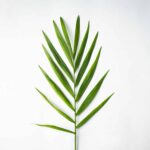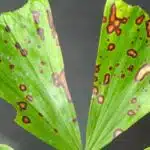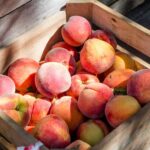Date palm trees, with their majestic stature, are a beautiful addition to any landscape. As an ancient symbol of strength, date palms can be found in many parts of the world. Not only do they add beauty to your environment, but they also provide a source of delicious fruit that can be enjoyed year-round. If you’re looking to add a unique and eye-catching tree to your garden or backyard, consider growing and caring for a date palm tree.
In this article, we’ll explain how to successfully grow and care for date palms so that you can enjoy them all year long. We’ll cover everything from selecting the right variety for your climate zone to proper fertilization techniques. With our tips and tricks, you’ll be able to ensure that your date palms remain healthy and productive for years to come.
Whether you’re looking for an attractive addition to your garden or want fresh dates from the comfort of your own home, read on as we explore how to properly grow and care for date palm trees!
Choosing A Date Palm Tree For Your Gardening Space
Choosing the right date palm tree for your space is an important decision. After all, you’ll be living with it for years to come! It’s essential to consider the size and shape of the tree, and whether it will fit into the existing landscape. If you’re just starting out, you may want to select a smaller variety that won’t grow too tall or wide. And if you have limited space, be sure to choose one that isn’t too large for its environment.
You’ll also want to consider the climate where you live when selecting a date palm tree. Some species are more tolerant of cold temperatures than others, so make sure your choice will thrive in your area’s conditions. Additionally, some species don’t handle salty air well, so if you live near the ocean, pick a variety that can handle salt spray.
Once you’ve chosen the right type of date palm tree for your garden space, it’s time to start thinking about site selection. Where will it go? Will it get enough sunlight? Will there be enough room for it to spread its roots? Are there any nearby trees that could affect its growth? These are all important questions to ask yourself before planting your new palm tree!
Site Selection For Planting Date Palm Trees
For anyone looking to add a bit of the tropics to their garden, date palms are an excellent choice. Don’t just take our word for it – take the case of Diane and Jeff, who planted two date palms in their backyard and are reaping the rewards. After selecting their desired type of palm tree, they needed to decide on the best site for planting.
When selecting a site for your date palm tree, it’s important to consider the following:
- How much sun does it get? Date palms need plenty of sunlight throughout the day so they can thrive.
- What is the soil like? It should be able to hold moisture without becoming soggy.
- Is there enough room? Date palm trees tend to be quite large once established, so make sure you have enough room for them to grow.
- Is it windy? The fronds of date palms are particularly vulnerable to strong winds which can cause damage.
With these tips in mind, Diane and Jeff were able to find a spot that was perfect for their date palms: a sunny spot that was protected from strong winds but had well-draining soil with adequate space for growth. This is just one example of how careful site selection can pay off when growing date palm trees!
Now that you’ve identified an ideal location, it’s time to move onto the next step in getting your own tropical paradise – soil preparation!
Soil Preparation For Date Palm Trees
Soil preparation is essential for successful date palm tree planting. It’s important to choose the right soil composition and texture in order to ensure that your palms get off to the best possible start. Here are three things you should consider when preparing the soil for your date palm trees:
• Texture: The soil needs to be light and well-draining. If it’s too clay-like or heavy, the roots won’t be able to spread out and grow properly.
• Nutrients: Make sure the soil has enough organic matter, such as compost, so it can provide plenty of nutrients for your trees over time.
• pH Level: The ideal pH level is between 6-7 but you may need to adjust this depending on what type of palms you plan on growing.
Taking these factors into consideration will help ensure that your palms have all the right ingredients they need to thrive in their new home. With a little bit of extra care through proper soil preparation, you can give your date palm trees a fighting chance at long-term health and growth! Planting date palm trees is an exciting endeavor, but with some thoughtful preparation beforehand, you can make sure that your investment yields lots of delicious dates in years to come.
Planting Date Palm Trees
When planting Date Palms, it’s important to know the right soil conditions and environment. The type of soil you should use depends on the variety of Date Palm you’re growing: some prefer sandy soil while others are better off in clay-like substances. Additionally, the size of your palm tree will determine how deep and wide you’ll need to dig for planting.
Once you’ve prepared the soil, it’s time to plant your Date Palm. Planting is a delicate process: start by placing the base of the palm into the hole before filling it with soil. Make sure to pack down the surrounding dirt firmly and water thoroughly after planting as this is essential for successful growth. If you’re planting multiple palms in an area, leave enough space between them so they have plenty of room to grow and thrive.
When transplanting from a container or pot, be sure to handle carefully and use gloves if needed as date palms have sharp spines that could cause skin irritation. It’s also important to keep an eye out for potential pests such as mites or scale insects during this time — early detection can help make treatment more effective.
TIP: When preparing your soil for planting, make sure to add compost or other organic matter like manure as this will help enrich the soil and give your date palms a much-needed boost!
Watering Your Date Palm Trees
When it comes to caring for date palm trees, one of the most important steps is providing adequate water. After all, even in desert climates, these majestic plants still need water to survive and thrive. Take the case of Sandra, a homeowner in Palm Springs, California with two date palms on her front lawn. Despite living in a dry climate, she still makes sure to give her palms enough water for them to grow healthy and strong.
Watering your date palm trees is an essential part of their care. During warm weather, they should be watered at least once a week to keep their soil consistently moist. If you live in an especially hot region like Sandra does, consider watering your palms more frequently during the summer months. It’s also important to make sure that each tree gets enough water – usually about 10 gallons per week – so that none of them are deprived.
If you’re not sure how much water your date palms need, always err on the side of caution and give them a little more than you think they need. And remember that if you see any yellowing or wilting leaves on your tree, it may be a sign that you’re not giving it enough water. To ensure healthy growth and development, take some time each week to check on your palms and make sure they have everything they need! With proper care and attention, your date palm trees will stay beautiful for years to come.
With regular watering taken care of, the next step for Sandra is applying fertilizer to her date palms. This will help provide them with essential nutrients that can’t be found naturally in the soil so they can stay strong and healthy as they continue to grow.
Fertilizing Date Palm Trees
To give your date palm trees the nutrients they need to grow and flourish, fertilizing is key – it’s like giving them a vitamin boost! As an analogy, think of it as the equivalent of giving your body a healthy dose of essential vitamins and minerals. But, just like with human health, there are different needs for different ages; for young palms you want to use a fertilizer with nitrogen, while mature palms may require more phosphorus or potassium.
It’s important to use the right fertilizer at the right time of year. If you’re in a region with cold winters, you’ll want to wait until the weather warms up before applying fertilizer. Generally speaking, it’s best to apply fertilizer in late spring or early summer when your date palm trees are actively growing; apply once every two months for young trees and once every six months for mature ones.
When adding fertilizer to your date palm trees, make sure not to overdo it – too much can be dangerous! It’s best practice to stick with organic fertilizers whenever possible and be sure to check the label on any chemical fertilizers so that you don’t exceed recommended levels. With proper care and attention, your date palm trees should thrive and bring beauty and shade to your garden. Now that we’ve discussed how to properly fertilize these majestic plants, let’s move onto pruning…
Pruning Date Palm Trees
Pruning is an essential step in caring for any type of tree, and date palm trees are no exception. Understanding the best pruning practices will help ensure healthy growth and strong yields. It’s important to monitor the shape of the tree while pruning, as well as remove any dead or dying branches.
When it comes to pruning date palm trees, you’ll want to begin with removing any suckers or offshoots that are growing around the base of the trunk. These could be competing with the main trunk for resources and should be removed every 1 – 2 years. Additionally, if there is a large clump at the top of the tree, try thinning out some of the fronds to allow air and light to get through.
Pruning your date palm regularly will also allow for more uniform growth throughout all sides of the tree. To achieve this, start by removing any fronds that have become brown or yellowed due to age or disease. Then move on to thinning out other fronds that may be blocking light from getting through. Taking these steps can provide a better environment for new and healthier growth within your date palm tree.
Controlling Pests And Diseases On Date Palm Trees
Date palm trees are a beautiful addition to any garden, providing lush foliage and delicious fruit. But while they’re usually low maintenance, they do require some care to grow and stay healthy. And that includes controlling pests and diseases on date palm trees.
Pests can harm date palms in many ways, from weakening branches to damaging the tree’s bark. Common pests to watch out for include borers, scale insects, mites, nematodes, and caterpillars. To protect your date palms from these pesky critters, inspect them regularly for signs of damage or infestation. If you spot something suspicious, it’s best to contact a professional pest control service for help eradicating the problem before it gets worse.
Besides pests, another issue you should watch out for is fungal diseases like leaf spot and root rot. These can spread quickly if not treated promptly. Fortunately, there are fungicides available that can help prevent or treat these problems. In addition to regular inspections of your date palm tree’s leaves and roots for signs of disease, make sure to water them properly and fertilize them regularly according to the instructions on the fertilizer label. This will also help keep your tree healthy and happy!
The key to keepingdate palms in good condition is prevention: monitoring your tree’s health regularly and taking steps to protect it from potential threats like pests and fungal diseases. Next up is protecting date palm trees from cold weather – something that requires its own special precautions!
Protecting Date Palm Trees From Cold Weather
It’s important to protect date palm trees from cold weather to ensure they continue to grow and remain healthy. There are several steps you can take to make sure your date palms survive cold snaps and periods of extreme temperatures:
- Plant your date palm in a spot that gets plenty of sun, as this will help keep the tree warm in winter.
- Regularly mulch around the root area of the date palm as this will help insulate it from cold temperatures.
- Make sure you prune your date palm correctly to prevent it becoming too vulnerable to frost damage.
These steps may seem simple enough, but taking them seriously can be crucial for protecting your tree from frost damage during colder months. It’s also important to remember that young trees are particularly vulnerable and need extra care when the temperature dips. If you’re able to provide extra insulation for your tree such as by covering it with cloth or plastic, this can offer additional protection against frost damage.
In addition, if you live in an area where temperatures drop below freezing regularly in winter, you may want to consider investing in a heater specifically designed for keeping plants warm at night—this could be an invaluable tool for ensuring your date palm survives cold weather! With these tips and precautions, you can make sure that your date palm is well-protected against cold weather and keeps thriving year after year. Now let’s move on to discussing how best to harvest dates from date palm trees!
Harvesting Dates From Date Palm Trees
Date Palm harvesting can be an exciting part of gardening. According to the United Nations Food and Agriculture Organization, over 6 million metric tons of dates are produced each year in the world with a majority of that amount coming from countries in the Middle East. Harvesting dates is simple but requires a bit of patience. Here are a few tips for harvesting your own date palm tree:
- Gather your supplies including gloves, ladder, scissors or pruning shears, and container for the harvested fruit.
- Watch for ripening dates on your tree throughout the summer months. To determine if a date is ready to pick, pull gently on it to see if it comes off without too much effort.
- Once you have harvested all of your ripe dates, lay them out in a single layer on a tray or paper towel and allow them to dry for about two weeks before consuming them.
The process of harvesting dates will also help you keep an eye on how healthy your tree is overall. By regularly pruning dead leaves and fronds, you’ll be able to better assess if there are any signs of disease or pest damage that need attention so you can take care of it quickly. Additionally, trimming away branches that are not producing fruit will encourage more productivity from those that still bear fruit during the upcoming season.
Having fresh dates right off the tree may be one of life’s greatest pleasures – sweet and delicious! With proper care and maintenance, you can enjoy this bounty every year while helping keep your date palm tree healthy along the way. Onward to rejuvenating overgrown date palms!
Rejuvenating Overgrown Date Palms
Rejuvenating overgrown date palms can be an important and rewarding step in caring for your trees. If your palms have become too large for their environment or have started to lose their appeal, it’s time to take action. Fortunately, the process of rejuvenating palms is relatively straightforward and can help them look their best.
First, prune your date palms by removing any dead fronds and any diseased or damaged fronds. Make sure you leave at least three fronds per foot in order to maintain a healthy tree. Trim away old, yellowed fronds near the trunk and cut off any suckers growing from the base of the palm. Removing these can help prevent diseases that could harm your tree.
Next, fertilize your palm trees with a balanced fertilizer that includes nitrogen, phosphorous, and potassium-based fertilizers. Additionally, ensure that you are providing adequate irrigation – water your trees on a regular schedule according to their size and age so they receive enough moisture without becoming overwatered. With proper care and attention, overgrown date palms should start to look better within a few months.
With these steps taken care of, you can move onto planting and growing date palm trees in containers if desired – giving you more options for how to enjoy this majestic species of tree as part of your landscape!
Planting And Growing Date Palm Trees In Containers
If you’re looking to enjoy date palms up close and personal, planting them in containers is a great option. Containers allow you to move the trees around to get the most out of your outdoor space. Plus, you can bring them inside during cold weather. Growing date palms in containers does require a bit more care as far as drainage and soil choice goes, but with a little extra effort, you can have beautiful palms in no time.
To start off, make sure your container has plenty of drainage holes at the bottom. Get a potting mix that’s well-draining and contains organic material like peat moss or coconut coir. Planting should take place in spring or fall when the temperature is moderate—not too hot or cold—and avoid any frosty conditions. Choose a location where your tree will be exposed to four or five hours of direct sunlight each day and water regularly with warm water so it doesn’t shock the roots.
You also want to keep an eye on fertilizer levels throughout the growing season as this will help promote healthy growth for your palm tree. Applying some slow-release granular fertilizer every few months should do the trick if you don’t want to get into frequent feedings with liquid fertilizers. As long as you provide the right environment and give it enough love, your date palm should thrive in its new home!
Propagating Date Palm Trees
Propagating date palm trees can be a tricky proposition for novice gardeners, but with patience and practice, it’s possible to cultivate these majestic specimens. Perfectly suited for sunny climates, date palms are the perfect addition to any garden. With just a few simple steps, you can learn how to propagate these beautiful trees.
For the best results, begin by preparing your soil and containers. Make sure that the area is well-drained and has plenty of organic matter to provide nutrients for your new tree. It’s also important to select healthy plants as sources of propagation material; you’ll want to ensure that your seedlings are strong and disease-free before planting them in their new home.
Once you’ve selected your source plants and prepared the soil, it’s time to start propagating. To do this, carefully remove any offshoots from the parent tree, making sure that they have enough roots attached so they can take root when planted in the soil. Once planted, water regularly until established; then provide a generous helping of mulch around the base of each tree to help keep the roots cool and moist during hot weather months. With proper care and maintenance, your date palms will provide you with years of enjoyment!
Common Varieties Of Date Palm Trees
Date palm trees are a unique species that bring a tropical feel to any landscape. Whether you’re cultivating them to harvest their fruit or simply use them as an ornamental, they can transform your space. But which varieties should you choose? Let’s explore 14 common varieties of date palm trees and see what makes each one so special.
To start, there’s the Phoenix dactylifera, which is an ancient and popular variety for cultivation due to its sweet dates. It produces medium-sized fruits with dark brown or black skin and yellowish flesh. Next up is the Deglet Noor, which has been around for centuries and is considered one of the best tasting dates. These have yellow-orange skin and soft amber flesh that’s delicious when dried or fresh.
For a more exotic look, the Medjool date palm tree is an eye-catching option with its bright green leaves and heavy clusters of large dates that ripen in September and October. Other popular varieties include:
- The Zahidi – known for its smaller fruit with caramel-like flavor;
- The Halawi – boasting large dates with a creamy texture;
- The Khadrawy – offering bright orange-red fruits with velvety skin;
- The Barhee – featuring small fruits with very sweet flavor when ripe.
No matter which variety you decide on, growing date palms can be enjoyable if done right. With the right care, you’ll be able to cultivate a beautiful addition to your garden or patio in no time!
Troubleshooting Common Problems With Date Palm Trees
Troubleshooting common problems with date palm trees is like a doctor diagnosing an illness. When issues arise, the first step to finding the solution is to identify what it is that’s causing the trouble. Fortunately, most date palm tree problems are easy to diagnose and treat.
Diseases like Fusarium Wilt and Ganoderma butt rot can cause stunted growth, discolored foliage, and even death in extreme cases. To prevent these diseases, ensure your palms have ample space for air circulation and plenty of water drainage. If you do find your tree has a disease, prune any affected parts and treat with fungicide as soon as possible.
Insects such as mites and mealybugs can also cause damage by sucking the sap from leaves or stems. Make sure to regularly inspect your palms for signs of infestation so that you can act quickly if necessary. To control pests, try using natural insecticides or removing them manually with a cotton swab dipped in rubbing alcohol.
Taking proper care of your date palm tree will help keep it healthy and free from potential problems. Regularly inspect for diseases and pests, provide adequate drainage and air circulation, and use appropriate treatments when needed to give your tree the best chance of thriving in its environment.
Frequently Asked Questions
How Often Should I Water My Date Palm Tree?
Watering a date palm tree can be tricky, but it’s essential for optimal growth. It’s like giving the tree a hug – too little or too much water can be damaging. To keep your date palm happy and healthy, it needs to be watered on a regular basis.
To start, imagine yourself as the date palm tree. You need enough water to stay alive and thrive, but not so much that you drown. That’s what watering your date palm tree is like: you don’t want to give it too much or too little water.
So how often should you water your date palm? Generally speaking, once every week to ten days is sufficient for mature trees in warm climates. If the soil is dry to the touch then it’s time to give your tree a drink! However, if you live in an area with cooler temperatures, consider increasing the frequency of watering during the summer months when plants are actively growing and require more moisture. Additionally, during periods of drought or intense heat, extra watering may be necessary to keep your date palm healthy and strong.
Here are some tips on how best to care for your date palm: •tWatering: Water regularly, once every week up to 10 days depending on climate conditions and temperature •tFertilizing: Fertilize twice per year with a slow-release fertilizer specifically formulated for palms •tPruning: Prune away dead fronds as needed using sharp pruning shears •tMulching: Spread mulch around the base of the trunk of your date palm to help retain moisture in hot weather By following these guidelines and providing adequate amounts of water for your date palm tree, you’ll be sure to have a happy and healthy plant that will bring shade and beauty into your garden for years to come!
What Is The Ideal Temperature Range For A Date Palm Tree?
When it comes to caring for date palms, temperature is an important factor. It’s important to understand the ideal temperature range in order to keep your trees healthy and ensure they produce a plentiful harvest of dates. So what is the best temperature range for date palms?
Research suggests that date palms prefer temperatures that are consistently warm but not too hot. Ideal temperatures range from 60-90 degrees Fahrenheit during the day, and slightly cooler at night. In regions with very hot climates, such as desert areas, it’s best to provide some kind of shade or windbreak in order to protect your trees from high winds and scorching temperatures.
In addition, date palms are surprisingly cold hardy and can tolerate colder temperatures than you might think. They can survive down to 25 degrees Fahrenheit when mature, although younger trees may be more vulnerable if exposed to freezing temperatures for extended periods. Therefore it’s important to take precautions if there is a chance of cold spells near you, such as covering young trees with fabric or mulch.
Keeping your date palm within its ideal temperature range will help ensure it has a long and healthy life full of delicious dates!
How Much Light Does A Date Palm Tree Need?
Did you know that date palm trees need an incredible amount of light to thrive? Studies show that these majestic trees require at least 8 hours of direct sunlight each day, with a total of 12 hours per day being the ideal amount. Many gardeners also find that providing supplemental lighting to their palm tree during the winter months can be beneficial in ensuring optimum growth and health.
So what does this mean for the gardener looking to grow a date palm tree? First and foremost, it’s important to select a location for your tree that receives full sun throughout most of the day. This means selecting a spot where there are no large buildings or trees blocking out the light. Additionally, if you live in an area with cooler winters, you may need to provide some additional light sources to ensure your date palm gets enough energy.
Fortunately, taking care of a date palm tree doesn’t have to be difficult. When given enough sunlight and water, these magnificent trees will reward their owners with beautiful foliage and delicious fruit year after year! And with just a few simple steps – such as providing adequate amounts of light and water – anyone can enjoy watching their date palm tree grow into its full glory!
How Long Does It Take For A Date Palm Tree To Produce Dates?
The date palm tree is a miraculous plant, capable of producing an abundance of sweet, succulent dates year after year. Its ability to thrive for decades in harsh desert climates is nothing short of incredible—not to mention its gorgeous look and majestic stature! But how long does it take for a date palm tree to produce dates? It’s an important question for anyone looking to grow this fascinating fruit tree.
Well, the answer all depends on the variety of date palm tree you’re hoping to grow. Some varieties take as little as two years before they begin producing dates, while others may take up to five or six years before they fruit. The most important thing is that you choose the right variety for your climate and provide it with enough water and sunlight. Here are 4 tips on how to get your date palm tree growing faster:
- Plant your date palm tree in well-draining soil; it should be slightly acidic with a pH between 6.0 and 7.5.
- Prune regularly, removing any dead or discolored leaves from the base of the fronds as soon as possible.
- Fertilize at least once a month during the growing season with a fertilizer that contains nitrogen and potassium for optimal growth and fruiting.
- Keep weeds away from the base of the tree by using mulch or other organic materials like straw or wood chips.
These four steps will help ensure your date palm tree grows strong and healthy so that you can enjoy its delicious fruits sooner rather than later! With patience, proper care, and plenty of sunshine, you’ll be enjoying dates fresh off your own tree in no time at all!
Can I Grow A Date Palm Tree Indoors?
Can you grow a date palm tree indoors? Have you ever wanted to have your own edible oasis inside the comfort of your own home? Growing a date palm tree indoors is possible, however it’s important to understand the specific needs of this unique plant in order to ensure its health and success.
So, what does a date palm need to thrive indoors? Firstly, it requires plenty of light. An ideal location for an indoor date palm is near a south-facing window. If there isn’t enough natural light available, then you may need to supplement artificial lighting with fluorescent bulbs or LED lights that are designed for plants.
It’s also important to maintain consistent temperatures and humidity levels for your indoor date palm. To ensure it gets enough humidity, you can use a humidifier or mist the leaves regularly with water. Additionally, when watering your tree, make sure you don’t overwater it since too much water can cause root rot. Instead, wait until the soil is dry before providing more water and fertilize during the growing season with a slow-release fertilizer designed for palms.
By following these guidelines and providing adequate attention and care, you can enjoy having your own indoor oasis filled with delicious dates!
Conclusion
In conclusion, growing and caring for date palm trees is a rewarding experience that can provide you with delicious dates for years to come. With proper care and maintenance, these trees can thrive in many different climates and environments. Watering your tree regularly, providing it with the ideal temperature range, giving it plenty of light and understanding how long it takes for a tree to produce dates can help you achieve success with your date palms.
For example, if you live in an area with mild winters, you may find that your date palm trees are able to produce dates year-round. If temperatures drop too low, however, the tree might go dormant for a few months until the weather warms up again. Providing extra protection may also be necessary when temperatures drop significantly in order to ensure that your tree survives the winter season.
Alternatively, if you don’t have access to outdoor space or prefer to keep things indoors, you can still grow a date palm tree inside as long as you provide it with enough sunlight and adjust its environment accordingly. With some patience and effort, you can enjoy sweet dates from your own indoor date palm tree!





























